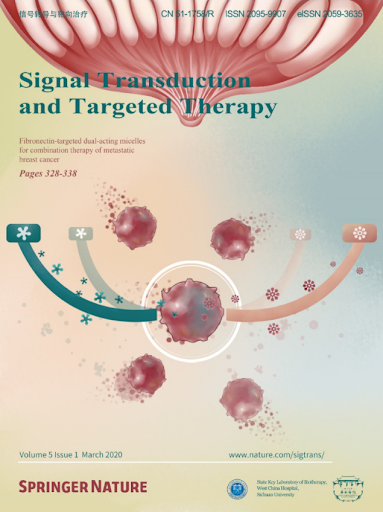癌症干细胞:前景、挑战和新兴治疗创新。
IF 52.7
1区 医学
Q1 BIOCHEMISTRY & MOLECULAR BIOLOGY
引用次数: 0
摘要
肿瘤干细胞(CSCs)是肿瘤中具有高度可塑性和治疗抗性的细胞亚群,可驱动肿瘤的发生、进展、转移和复发。它们能够逃避常规治疗,适应代谢应激,并与肿瘤微环境相互作用,这使它们成为创新治疗策略的关键靶点。单细胞测序、空间转录组学和多组学整合的最新进展显著提高了我们对CSC异质性和代谢适应性的理解。代谢可塑性使CSCs能够在糖酵解、氧化磷酸化和替代燃料来源(如谷氨酰胺和脂肪酸)之间切换,使其能够在不同的环境条件下生存。此外,与基质细胞、免疫成分和血管内皮细胞的相互作用促进了代谢共生,进一步促进了CSC的存活和耐药。尽管取得了实质性进展,但主要障碍仍然存在,包括缺乏普遍可靠的CSC生物标志物,以及在不影响正常干细胞的情况下靶向CSC的挑战。3D类器官模型、基于crispr的功能筛选和人工智能驱动的多组学分析的发展为精确靶向CSC治疗铺平了道路。新兴的策略如双重代谢抑制、基于合成生物学的干预和基于免疫的方法有望克服csc介导的治疗耐药性。展望未来,结合代谢重编程、免疫调节和靶向抑制CSC脆弱性的综合方法对于开发有效的CSC定向治疗至关重要。本文讨论了CSC生物学的最新进展,强调了主要挑战,并探讨了将这些发现转化为临床应用的未来前景。本文章由计算机程序翻译,如有差异,请以英文原文为准。
Cancer stem cells: landscape, challenges and emerging therapeutic innovations.
Cancer stem cells (CSCs) constitute a highly plastic and therapy-resistant cell subpopulation within tumors that drives tumor initiation, progression, metastasis, and relapse. Their ability to evade conventional treatments, adapt to metabolic stress, and interact with the tumor microenvironment makes them critical targets for innovative therapeutic strategies. Recent advances in single-cell sequencing, spatial transcriptomics, and multiomics integration have significantly improved our understanding of CSC heterogeneity and metabolic adaptability. Metabolic plasticity allows CSCs to switch between glycolysis, oxidative phosphorylation, and alternative fuel sources such as glutamine and fatty acids, enabling them to survive under diverse environmental conditions. Moreover, interactions with stromal cells, immune components, and vascular endothelial cells facilitate metabolic symbiosis, further promoting CSC survival and drug resistance. Despite substantial progress, major hurdles remain, including the lack of universally reliable CSC biomarkers and the challenge of targeting CSCs without affecting normal stem cells. The development of 3D organoid models, CRISPR-based functional screens, and AI-driven multiomics analysis is paving the way for precision-targeted CSC therapies. Emerging strategies such as dual metabolic inhibition, synthetic biology-based interventions, and immune-based approaches hold promise for overcoming CSC-mediated therapy resistance. Moving forward, an integrative approach combining metabolic reprogramming, immunomodulation, and targeted inhibition of CSC vulnerabilities is essential for developing effective CSC-directed therapies. This review discusses the latest advancements in CSC biology, highlights key challenges, and explores future perspectives on translating these findings into clinical applications.
求助全文
通过发布文献求助,成功后即可免费获取论文全文。
去求助
来源期刊

Signal Transduction and Targeted Therapy
Biochemistry, Genetics and Molecular Biology-Genetics
CiteScore
44.50
自引率
1.50%
发文量
384
审稿时长
5 weeks
期刊介绍:
Signal Transduction and Targeted Therapy is an open access journal that focuses on timely publication of cutting-edge discoveries and advancements in basic science and clinical research related to signal transduction and targeted therapy.
Scope: The journal covers research on major human diseases, including, but not limited to:
Cancer,Cardiovascular diseases,Autoimmune diseases,Nervous system diseases.
 求助内容:
求助内容: 应助结果提醒方式:
应助结果提醒方式:


